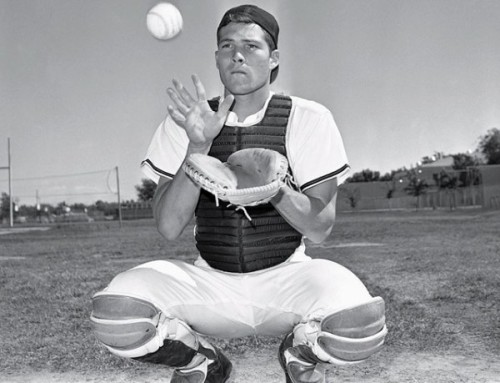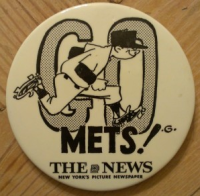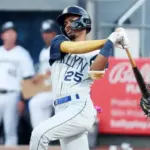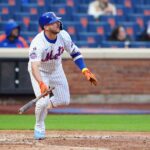
There are certain names that can make some Mets fans cringe whenever they hear them. Scott Kazmir is always good for few moans and groans, and ditto for Jason Bay. Then, there’s Gregg Jefferies who seemed to win Minor League Player Of The Year every season on his way to being fast-tracked to the Major Leagues. Only when he got there, he proved to be a player in search of a position who was despised by most of his teammates for his (alleged) selfishness and immaturity.
Despite a fairly productive career with the bat after leaving the Mets, Jefferies fell far short of his goals of surpassing Ty Cobb and Pete Rose for the all-time hits record, and he’s become more of a “whatever happened to…”.
But, old-time Met fans like me, will always cringe at the mention of the name Steven Chilcott. For you younger fans who may not be up on early Mets history, let’s go back to 1966.
The Mets had the number one overall selection in the 2nd Annual Amateur Draft and the choice clearly came down to two highly regarded players. There was the star slugging outfielder at Arizona State University, Reggie Jackson, and a high-school catcher out of California by the name of Steve Chilcott.
Of course, Reggie Jackson went on to hit 567 home runs on his way to a Hall Of Fame career. But on the other hand, Steve Chilcott never even made it to the Major Leagues. It was a sad turn of events for the Mets who essentially wasted their number one pick in the nation.
There had been some speculation that the Mets had some question about Jackson’s character and associations, but at the time, most big league scouts were divided as to which of the two was a better prospect.
Based on a personal scouting report from Casey Stengel, probably combined with Casey’s philosophy that “if you don’t have a catcher, you’re gonna have a lot of passed balls”, the Mets went with Chilcott.
That wasn’t the first mistake the Mets had made and it certainly wasn’t the last. But it was definitely among the biggest failures for a young struggling franchise looking to add as many young and talented prospects they could get their hands on.
 Anyway, I can say that I am probably one of the few people who actually saw Steve Chilcott play a professional game in New York City.
Anyway, I can say that I am probably one of the few people who actually saw Steve Chilcott play a professional game in New York City.
No, not with the Mets or the Yankees, since Chilcott never made the big leagues. But it was a special pre-game event at Yankee Stadium, a minor league game between the Auburn Mets and the Binghamton Yankees – reminiscent of the annual Mayor’s Trophy Game between the big-league Mets and Yankees.
Binghamton’s Mickey Scott out-dueled Auburn’s talented left-hander Jerry Koosman, 1-0 in front of maybe one-thousand fans tops, most of whom thought they were arriving early for some major league batting practice and a chance to score an autograph or photo with some of the players.
Despite being in enemy territory in the Bronx, there were a handful of Mets die-hards like myself who came out to see the Auburn Mets, and more specifically, to see the future of the Mets – Steve Chilcott. After all the tremendous hype and hoopla, I would finally get to see the catcher the Mets were so high on.
Getting to see Jerry Koosman was, of course, a bonus. Koosman dominated the New York Penn League hitters that season and after a quick jump to Triple-A the following year, he would become a mainstay of the Mets’ rotation for the next 11 years.
As for Chilcott, he hit a double down the right field line, almost a home run into the short right field seats of Yankee Stadium. But he also struck out a couple of times in his other two at-bats and he looked pretty bad doing it.
I was still sure that Chilcott would be starring for the Mets one day because that’s what all the “experts” said.
But little did I know that his appearance that day in Yankee Stadium would be the last chance I would ever get to see him play.















